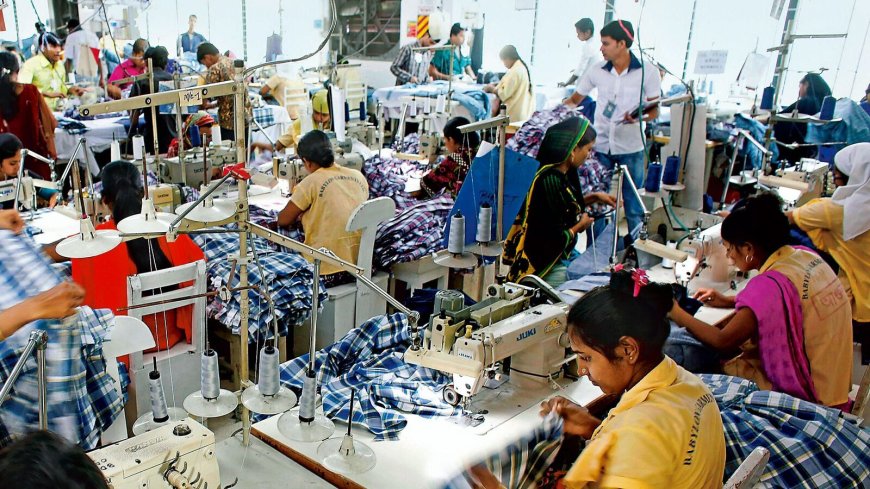Task force on textile explores strategies to boost exports
A high-level task force is exploring strategies to boost India’s textile exports through policy reforms, FTAs, green manufacturing, and infrastructure development.

New Delhi, June 11, 2025 — In a strategic move to rejuvenate and enhance India's textile exports, a high-level task force constituted by the Ministry of Textiles is actively exploring policy reforms and global market realignments. With the aim of positioning India as a key textile supplier in the post-pandemic global supply chain, the task force is focusing on sustainability, innovation, and value addition.
Strategic Focus on Export Competitiveness
The textile task force, chaired by senior officials from the Ministry of Textiles and comprising industry leaders, economists, and policy experts, has begun consultations with key stakeholders to chart a roadmap for export growth. The textile sector, which accounts for about 12% of India's total exports and employs over 45 million people, has been facing headwinds due to global competition, supply chain disruptions, and rising production costs.
“Our goal is to create a globally competitive ecosystem by addressing bottlenecks in infrastructure, financing, and technology adoption,” said Rajeev Suri, a senior official in the Ministry. “India has the potential to become a global hub for high-quality textiles, especially in value-added and technical textiles.”
Key Recommendations Under Discussion
The task force is expected to submit a preliminary report by the end of Q2 FY25. Some of the major strategies under consideration include:
-
PLI Scheme Expansion: Extending and expanding the Production Linked Incentive (PLI) scheme to more textile sub-sectors, including synthetic and technical textiles.
-
Free Trade Agreements (FTAs): Fast-tracking FTAs with Europe, the UK, and Canada to lower tariff barriers.
-
Cluster Development: Promoting mega textile parks and dedicated export zones with plug-and-play infrastructure.
-
Green Manufacturing: Encouraging sustainable practices and certification to cater to eco-conscious global buyers.
-
Skill Development: Enhancing skilling initiatives to upgrade workforce capabilities in modern textile production.
Dr. Meera Vashisht, textile economist at NCAER, noted, “India must move up the value chain. We are still heavily reliant on cotton and basic garments, while global demand is shifting towards functional and smart textiles.”
Global Market Context and Competitive Landscape
India’s textile exports stood at around $40 billion in FY24, marking a moderate recovery from pandemic lows but still trailing behind competitors like Bangladesh and Vietnam in specific categories such as synthetic apparel and activewear. China, while still a dominant force, is gradually ceding space due to rising labor costs and geopolitical tensions, creating opportunities for Indian exporters.
The US and EU remain key markets, but emerging economies in Africa and Latin America are being explored for diversification. The depreciation of the rupee and rising geopolitical instability in competing nations may work to India’s advantage in the near term.
Industry Reactions
The Confederation of Indian Textile Industry (CITI) welcomed the task force’s efforts but urged quicker implementation. “We’ve heard many good intentions before, but execution is what matters,” said Sanjay Kothari, Vice President of CITI. “We need a level playing field, especially in terms of export incentives and energy costs.”
Exporters have also stressed the importance of digitalization and real-time data access. “Market intelligence and faster port clearances are just as important as policy changes,” said Anjali Menon, founder of a Mumbai-based textile export house. “We're excited about the renewed focus, but we hope the government walks the talk.”
Investor Outlook
The stock market has responded positively to early announcements related to textile sector reforms. Shares of leading textile firms like Welspun India, Trident, and Vardhman Textiles have shown upward momentum in recent sessions. Investors are eyeing mid- and long-term gains, particularly if the task force recommendations translate into actionable policy.
Ajay Maheshwari, equity strategist at JM Financial, commented, “A structured textile policy, coupled with trade pacts and infrastructure support, can generate a new wave of investor interest. Technical textiles and home furnishings are likely to be the biggest beneficiaries.”
The Road Ahead
The task force is expected to hold its final round of consultations with industry bodies later this month. A white paper will follow, detailing sectoral pain points and priority interventions. If the recommendations are swiftly adopted, the textile sector could witness a robust 10–12% annual growth in exports over the next five years.
In a world moving towards friend-shoring and diversified sourcing, India has a golden opportunity to reclaim its historical status as a textile powerhouse. The task force’s deliberations could very well be the turning point.
What's Your Reaction?
 Like
0
Like
0
 Dislike
0
Dislike
0
 Love
0
Love
0
 Funny
0
Funny
0
 Angry
0
Angry
0
 Sad
0
Sad
0
 Wow
0
Wow
0










































































